The Aharonov–Bohm effect is a quantum-mechanical phenomenon in which an electrically charged particle is affected by an electromagnetic potential
The AB effect shows also that
Aharonov–Bohm solenoid effect
A solenoid generates a magnetic field only in the inner part of the loop, thus in the ring arms (in grey) there is no
We notice that any close line of
Thus since we know that
and for Stokes theorem we have also that:
From these relationships, we can get the information that there are regions in space where the value of
First case (
Second case (
we can plot
Schrödinger equation of the system
We start from the general Schrödinger equation like in the case of the Quantum Hall effect :
But this time instead of replacing
This changes the Schrödinger equation but not the physical predictions (expected values).
Let’s see how such a transformation can simplify the mathematical form of the Schrödinger equation
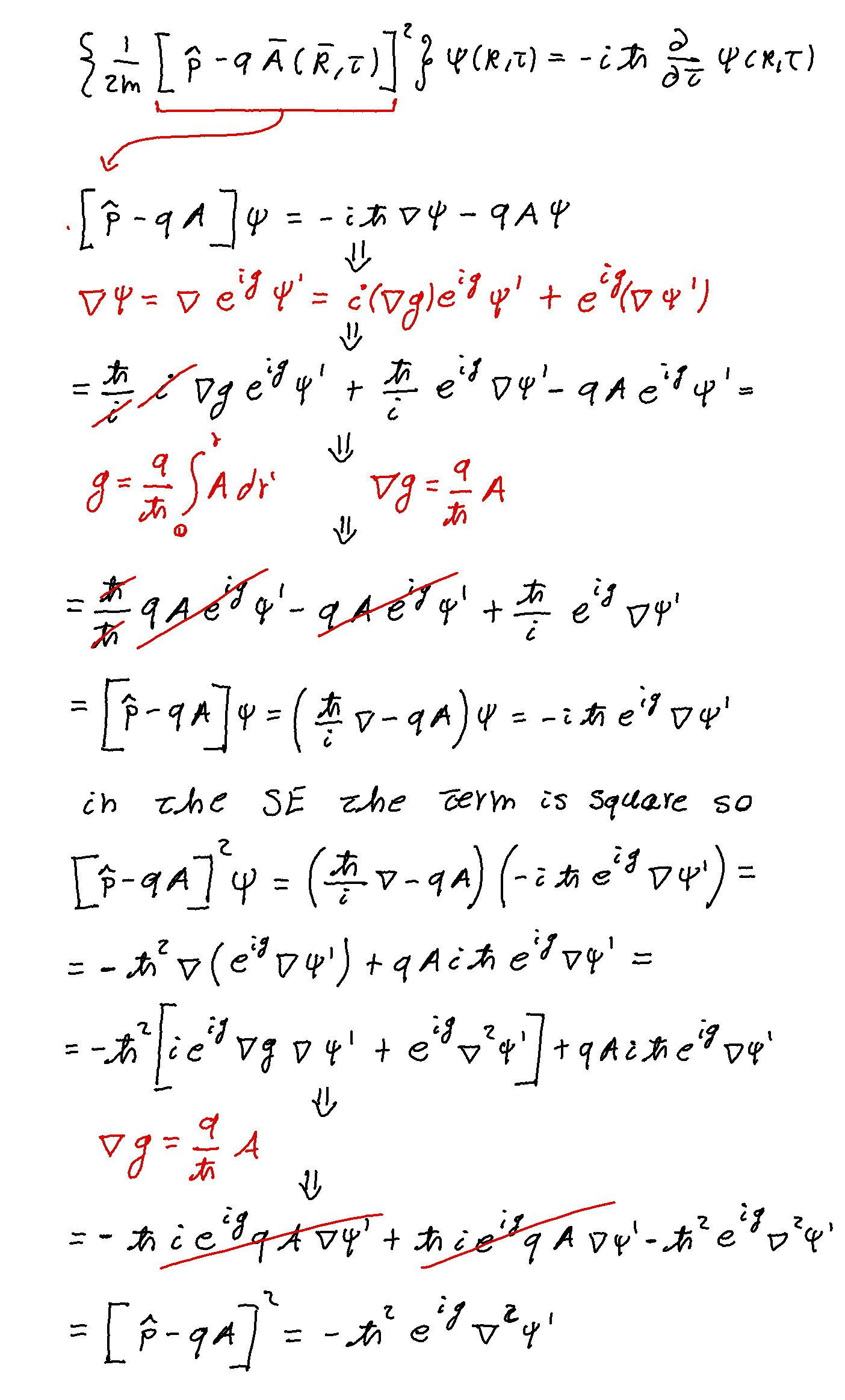
Substituting in the Schrödinger equation:
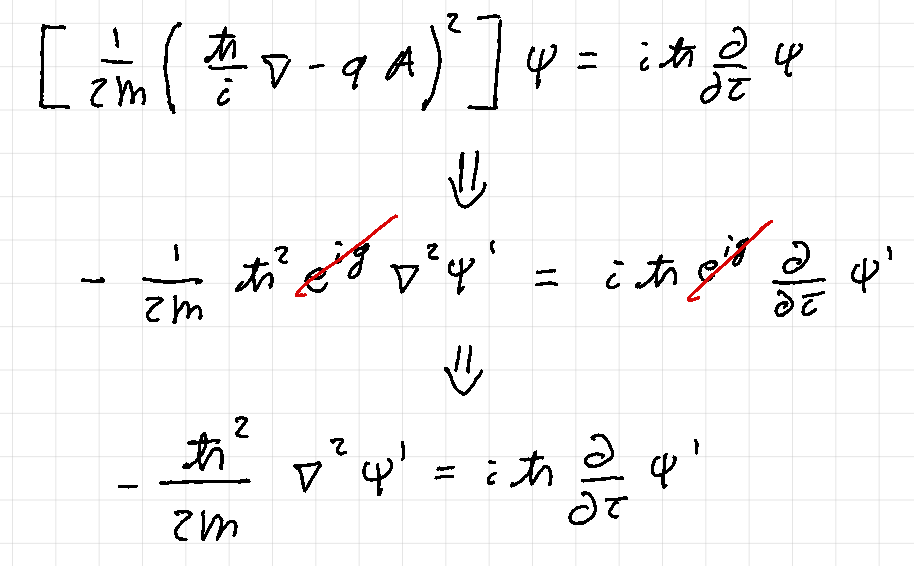
the new equation is the Schrödinger equation of the free particle is much simpler than the previous one.
As we have seen, the effect of
We recognize that the total phase of a wave function is given by
-
The Magnetic Vector Potential Contribution: This term represents the phase shift acquired by a charged particle due to the presence of a magnetic vector potential. This integral is evaluated along the path of the particle from an initial point
-
The Initial Phase (
Reflected and transmitted waves
We can treat the ring as a barrier problem with propagating, reflected and transmitted waves
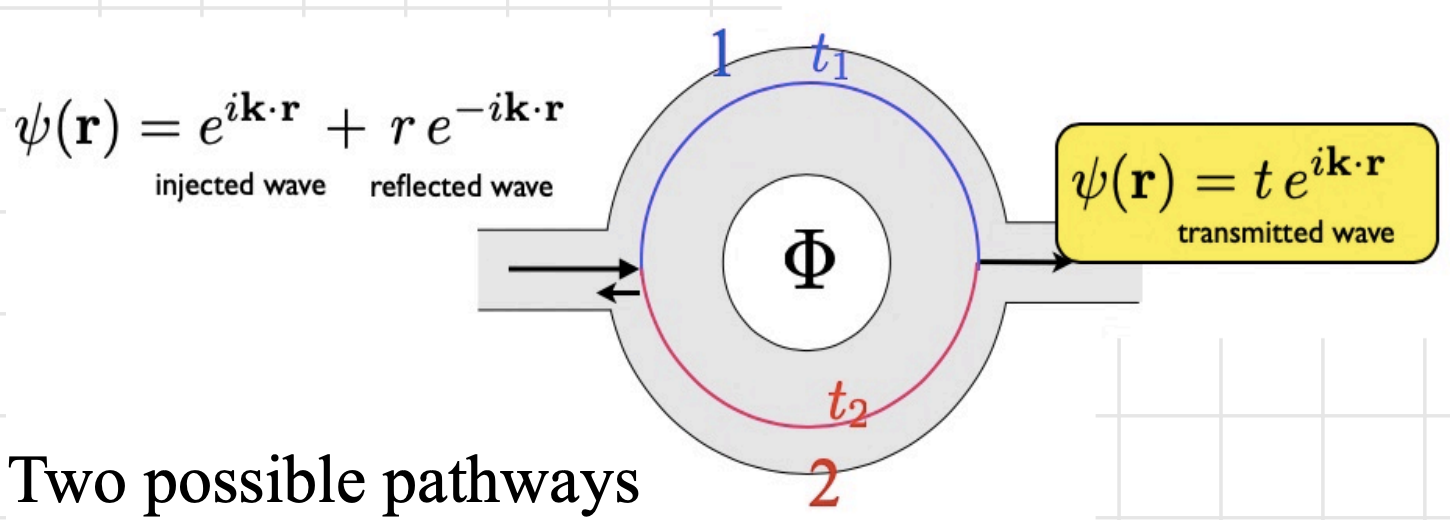
we have incoming waves with an amplitude of
It’s important to note that in general, the amplitudes (
the total transmission probability is given by:
Depending on the path taken, the electron
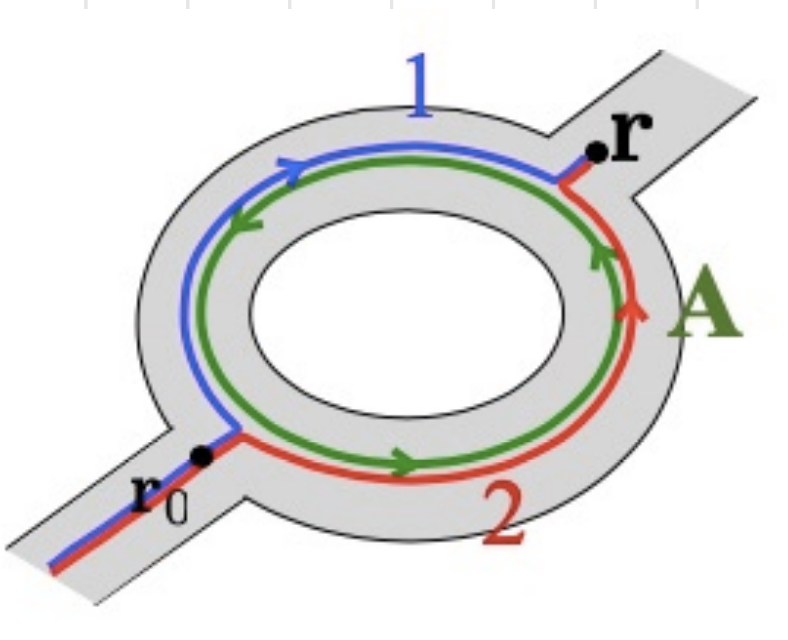
We use the new definition of the phase that includes
The sign of this term is determined by the sign of the charge of the particle. We notice that the sum of the two paths is the loop integral that we know being equal to the flux:
The sign of the term related to the path 1 is due to the fact that
The phase difference between the wave functions of electrons taking two different paths around the magnetic flux is a function of the enclosed magnetic flux, even if there is no magnetic field present in the region where the electrons are traveling (because we are outside the solenoid). The interference pattern resulting from the two electron paths can be constructive, destructive, or somewhere in between, depending on the phase difference. The constructive interference amplifies the signal, and the destructive interference diminishes it.
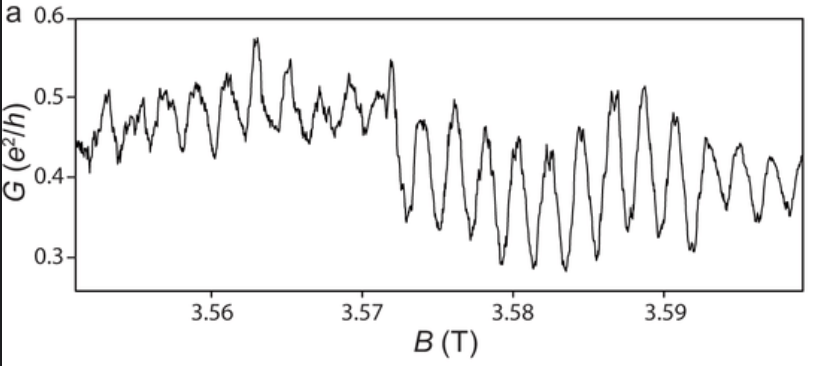
The image shows an oscillatory pattern in the measurement of the conductance (
